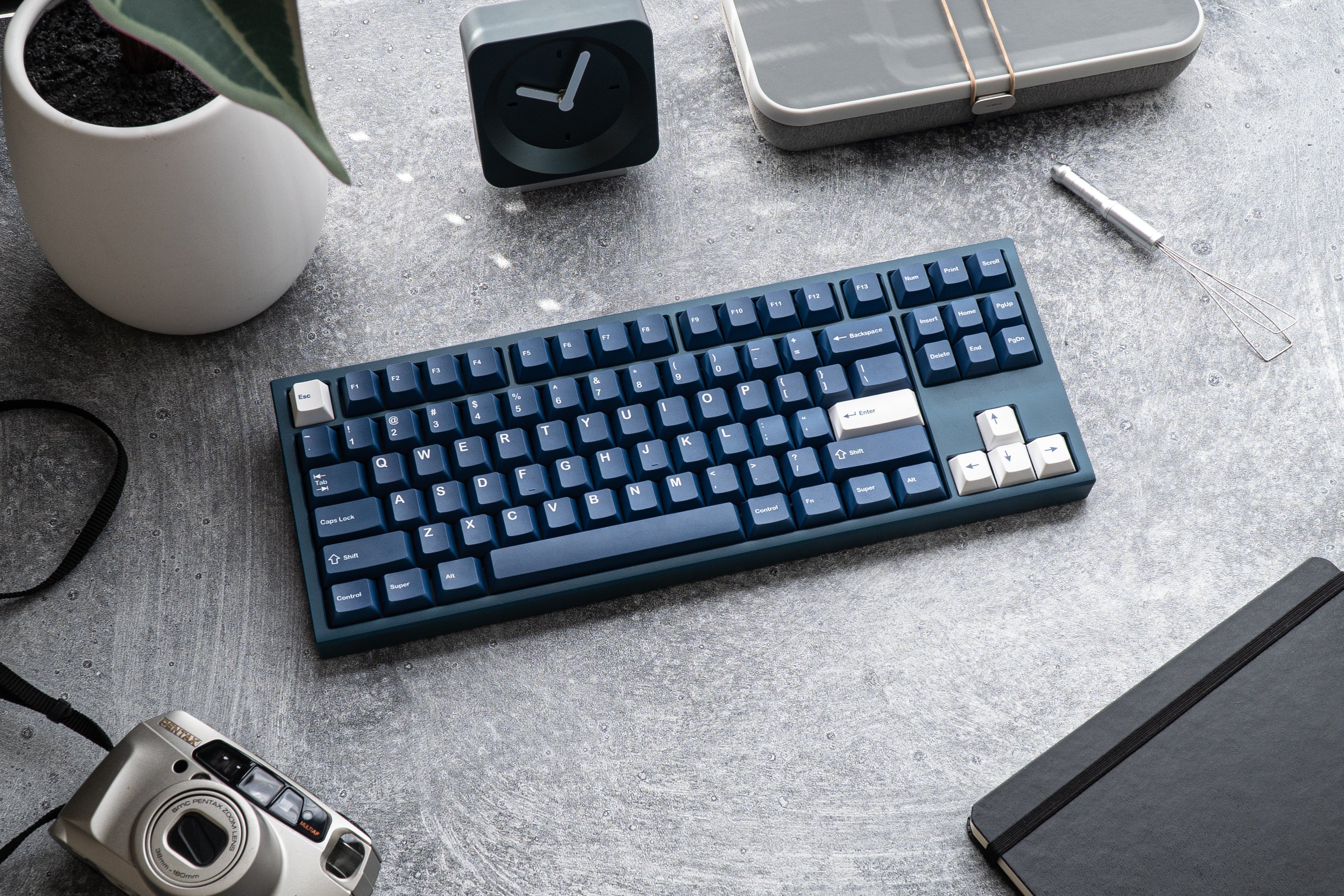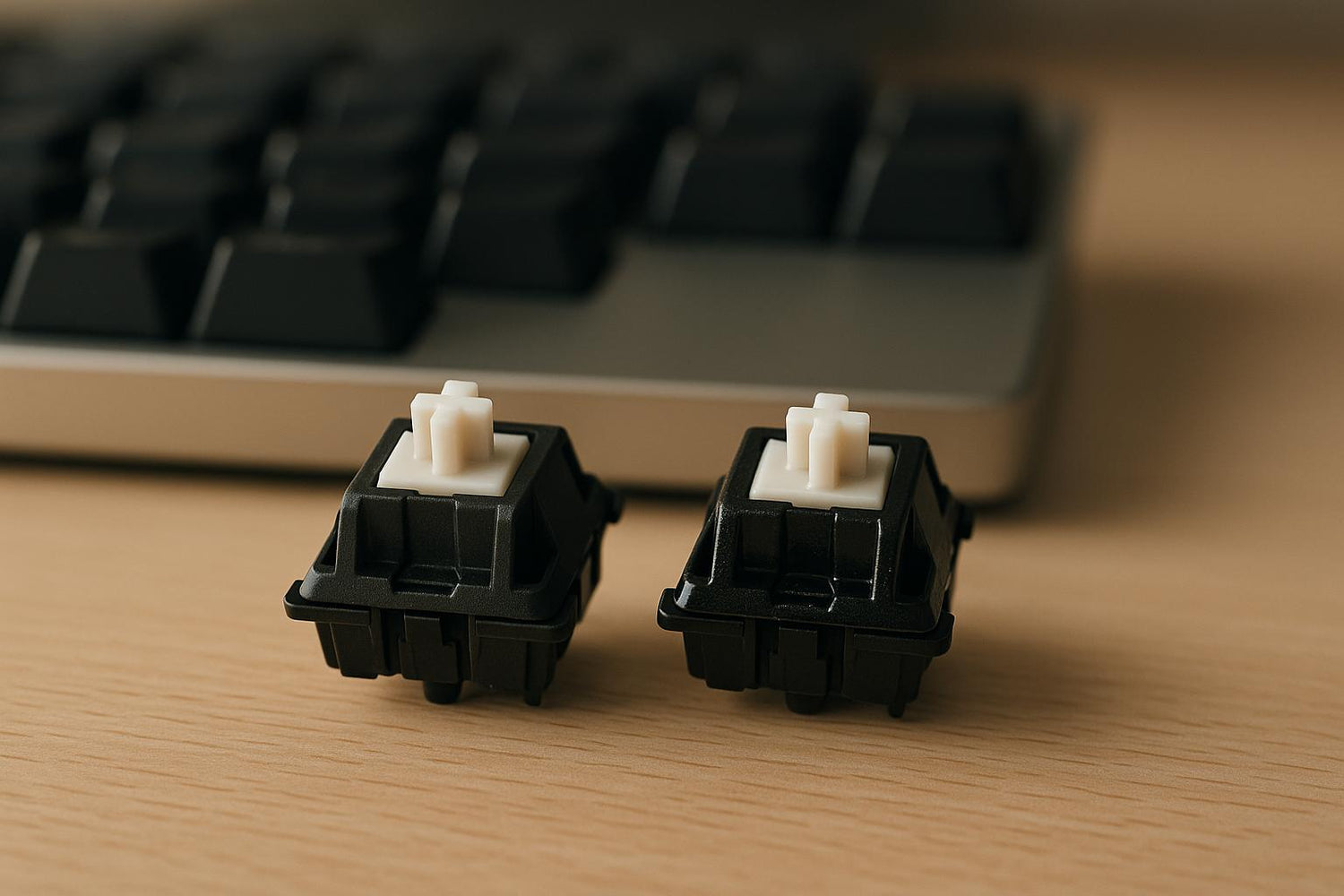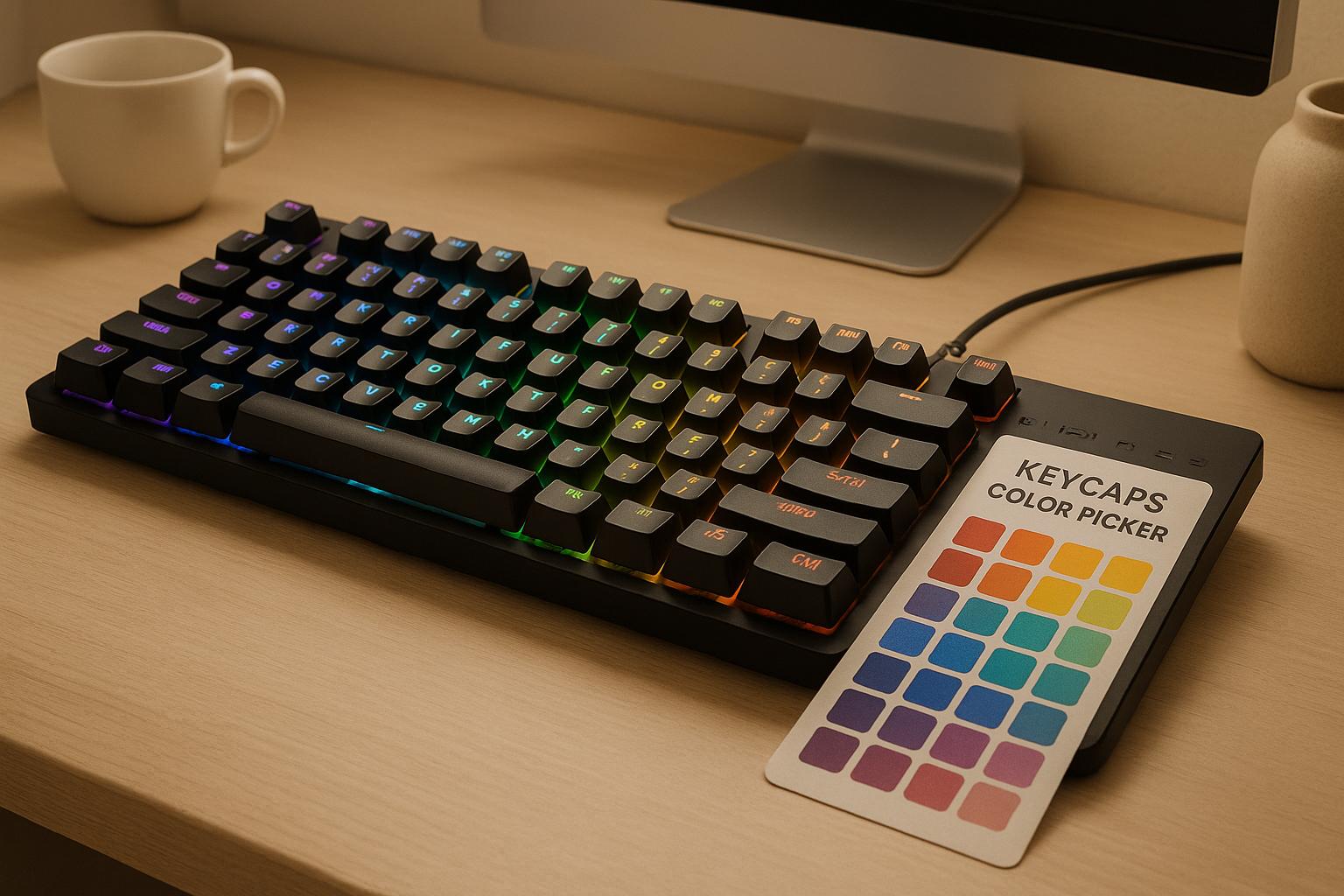Lubing your keyboard switches can transform how they feel and sound. Here's a quick breakdown of what changes when you lube switches versus leaving them as-is:
- Unlubed switches: Often feel scratchy, inconsistent, and noisier due to friction between components. Typing can feel rough, and the sound profile is uneven and harsher. Over time, the lack of lubrication may lead to faster wear and tear.
- Lubed switches: Deliver smoother keystrokes, quieter operation, and a more polished sound profile. Reduced friction improves comfort during long typing sessions and increases switch durability.
Why lube switches? It minimizes friction, smoothens keystrokes, and enhances the overall typing experience. The process involves disassembling switches, applying lubricant to key parts (such as stems and springs), and reassembling them carefully.
Tools you need:
- Switch opener ($19.00) for disassembly.
- Lube brushes ($4.00) for precise application.
- Stem holders ($4.90) for easier handling.
- Recommended lubricants: Krytox 205 g0 ($7.95), Tribosys 3204 ($8.00), and Krytox GPL 105 Oil ($10.00).
Quick Comparison
| Feature | Unlubed Switches | Lubed Switches |
|---|---|---|
| Sound Profile | Noisy, uneven, scratchy | Quieter, smoother, consistent |
| Feel | Rough, inconsistent | Smooth, uniform |
| Typing Comfort | Less comfortable, tiring over time | More comfortable, less strain |
| Durability | Prone to faster wear | Longer-lasting components |
Switch lubrication is a time-intensive but rewarding process. If you want a smoother, quieter, and more durable keyboard, lubing your switches is worth the effort.
Lubing a keyboard switch (before and after)
Unlubed Switches: Performance and Issues
When switches come straight from the factory without lubrication, their performance can vary significantly. This variability is often due to manufacturing differences, which can influence how each switch feels and sounds. These inconsistencies highlight why lubrication is often seen as a game-changer for mechanical switches.
Sound Profile of Unlubed Switches
Unlubed switches tend to produce uneven sound profiles. Without lubricant to dampen the interaction between components, the sounds can range from sharp clicks to scratchy noises. The exact sound depends heavily on the design and materials of the switch.
Feel and Smoothness of Unlubed Switches
The absence of lubrication exposes the friction between plastic parts, resulting in a rougher tactile feel. This friction can make switch actuation feel less smooth and more inconsistent, with variations depending on the specific switch type.
Impact on Typing Experience and Longevity
Typing on unlubed switches can feel less comfortable over time, especially during extended use. The inconsistent sound and rough feel can detract from the overall experience. Additionally, the long-term durability of unlubed switches may vary depending on their factory design and how they are used.
Lubed Switches: Key Improvements
Adding lubrication to switches can significantly elevate their performance, especially when it comes to sound and smoothness. It effectively addresses the roughness and inconsistent acoustics often found in unlubed switches.
Sound Profile After Lubrication
Once lubricated, switches produce a quieter and more polished sound compared to their factory state. As KeebsForAll puts it:
"KFA Switches are not just about exceptional performance; they're all about making your keyboard sound absolutely awesome!"
This improvement stems from the lubricant's ability to reduce the noise caused by plastic-on-plastic contact. The result? A sound profile that's quieter, more consistent, and far more pleasing to the ears - a perfect complement to the smoother tactile feel.
Smoothness and Reduced Friction
Lubrication also transforms the feel of a switch by minimizing friction between its moving parts. This reduction in friction leads to smoother, more uniform keystrokes, making every press feel consistent and satisfying.
Enhanced Typing Comfort and Durability
The smoother operation doesn't just make typing more enjoyable - it also reduces strain during extended use. Plus, by lessening wear and tear on the switch components, lubrication helps extend their lifespan, proving to be a smart choice for those who type daily or use their keyboard heavily.
sbb-itb-3cb9615
Before vs After Lubrication: Direct Comparison
Many keyboard enthusiasts agree that lubrication noticeably alters the sound profile, giving it a smoother and more refined tone. While aspects like tactile feedback, longevity, and upkeep are often part of the conversation, the most apparent change is in the sound. Here's a detailed look at the key differences:
Best Practices for Lubing Switches
Lubricating keyboard switches requires precision and care to get the best results. By following tried-and-true methods, you can avoid mistakes that might damage your switches or lead to uneven performance. These steps build on the earlier discussion of lubrication benefits, ensuring your keyboard switches deliver consistent, high-quality performance.
Step-by-Step Process for Lubing Switches
To start, fully disassemble each switch. This means removing the top housing, taking out the spring, stem, and bottom housing. Use a dry cloth to clean each part, paying extra attention to the stem rails and contact points to remove factory oils or debris.
When applying lubricant, use a light and precise touch. For the stem, focus on the sides and bottom where it interacts with the housing, but avoid the tactile legs on tactile switches to preserve their intended feel. The spring only needs a thin coat, focusing on its contact areas. For the bottom housing, concentrate on spots where friction occurs. During reassembly, make sure the stem is properly aligned and the spring is seated evenly. Once reassembled, test each switch before moving on to the next.
Recommended Tools and Products
Using the right tools can make the process smoother and more consistent. KeebsForAll provides several helpful items for this task:
- Switch Opener: Makes disassembling switches quick and safe.
- Lube Brushes: Ensures precise application of lubricant.
- Stem Holder for Switches: Keeps components steady during the process.
As for lubricants, Krytox 205 g0 is a popular choice for both linear and tactile switches. If you’re working on areas like springs and need something thinner, Krytox GPL 105 Oil is a great option. For a middle-ground consistency, Tribosys 3204 works well. You can find all these products at KeebsForAll.
Maintenance Tips for Lubed Switches
After lubricating your switches, regular maintenance will help keep them in top shape. If you notice scratchiness, harsh sounds, or inconsistent keypresses, it might be time to reapply the lubricant. Stick to gentle cleaning methods, as liquid cleaners can strip away the lubricant.
When re-lubing, there’s no need to fully disassemble every switch. Focus on the most worn areas instead. Your maintenance schedule will depend on how often you use your keyboard - heavier use will naturally require more frequent touch-ups. Routine care not only preserves the smooth feel but also extends the life of your switches.
Conclusion: Key Takeaways
Lubricating your keyboard switches can make a world of difference. It smooths out keystrokes and fine-tunes the sound, creating a much better experience compared to unlubed switches.
By reducing friction, lubrication not only makes long typing sessions more comfortable but also maintains the tactile feedback you love. These upgrades ensure your keyboard feels and performs better every time you use it.
If you're looking to improve your keyboard's performance, lubrication is a tried-and-true modification. For top-notch components and more information, check out KeebsForAll.
FAQs
What are the main advantages of lubricating keyboard switches compared to leaving them unlubed?
Lubricating your keyboard switches can make a noticeable difference in how they feel and sound. Lubed switches glide more effortlessly, offering a smoother and more consistent typing experience. The lubrication reduces friction between the moving parts, eliminating that scratchy sensation you might feel with each press. Plus, it dampens the sound, giving you quieter, more satisfying keystrokes.
On the other hand, unlubed switches can feel a bit rough and tend to be noisier, which some users might find distracting. If you take the time to lube your switches, you'll likely notice better performance and added comfort - something frequent typists and keyboard enthusiasts can definitely appreciate.
How does lubing mechanical keyboard switches affect their durability and typing comfort over time?
Lubricating mechanical keyboard switches can make a big difference in how they perform and feel. By reducing friction between the moving parts, lubrication helps cut down on wear and tear, which means your switches can last longer. This is especially helpful for heavy users like gamers or those who type a lot, as their keyboards endure more strain.
When it comes to comfort, lubed switches provide a noticeably smoother and quieter typing experience. The reduced scratchiness and dampened noise make typing or gaming more enjoyable. Many enthusiasts say that lubed switches feel more responsive and satisfying, making it a solid upgrade for anyone looking to enhance their keyboard's performance.
What tools and steps do I need to lube keyboard switches properly?
To properly lubricate keyboard switches, you'll need a few key tools: a switch opener, a fine brush (sizes 00 or 000 are ideal), a reliable lubricant like Krytox or Tribosys, and either tweezers or a keycap puller for disassembling the switches. If you want to make the process even easier, consider using optional tools like a switch holder.
Begin by carefully opening the switches with the switch opener. Using the fine brush, apply a small, even amount of lubricant to the switch stem, springs, and housing. Avoid overapplying, as too much lubricant can negatively impact the switch's performance. Once everything is lubed, reassemble the switches and test them to ensure they feel smoother and produce a better sound. Taking your time and working with precision will give you the best results, making your typing experience noticeably more enjoyable.



![[Pre-Order] Autumn Leaves PBT Keycaps - KeebsForAll](http://keebsforall.com/cdn/shop/products/DSC09732.jpg?v=1676148273)






Leave a comment
This site is protected by hCaptcha and the hCaptcha Privacy Policy and Terms of Service apply.